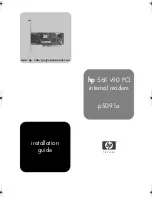
Quantum and Evolution Series Installation and Operating Handbook
8-37
•
The satellite gateway of the remote modem will normally point to the satellite IP
address of the modem local to the router.
If there are two routers then:
•
Either the modem IP traffic gateways could point to the local router and static
routes point to the far modem, or alternatively,
•
The satellite gateways could point to the other modem’s satellite address and
static routes could be used to forward to the local router (assuming dynamic
routing is not being used).
The IP traffic address is used when the M&C port is out of the bridge. It is also used when
an IP traffic card is fitted (to address the IP card), regardless of the M&C port settings. The
IP traffic address is not particularly useful until TCP acceleration, header compression or
routing is switched on, at which point (b)routing decisions are being made, which use the IP
traffic address.
TCP acceleration requires a gateway to be set unless everything is on the same subnet.
Note that
brouting
is a mode that uses both bridging and routing at the same time (UDP
packets will be bridged and TCP packets will be routed, but will still have an Ethernet frame
over satellite). Bridged packets always retain their Ethernet frame over satellite. Ethernet
frames are only absent over satellite when routing mode is used.
The base modem will only ever use the M&C gateway.
If the M&C port is out of the bridge, with no IP traffic card fitted, then the M&C gateway is
applied to the IP traffic port - if required, then an M&C gateway must be set up using a
static route in this case.
8.12.3 Throughput Performance
Actual throughput performance depends on a number of factors including one way/two way
traffic, packet size, data rates and the mixture of IP features switched on. There are
endless combinations and therefore it is strongly recommended that empirical testing is
undertaken prior to deployment to ensure that the required level of service can be provided.
The base modem throughput is restricted to 10000 packets per second. It is good practice
to put a switch (or router) between the modem and local network in order to minimize the
number of packets the modem has to process, as incidental network traffic (not intended
for satellite) has the potential to push the modem over it packet processing limit.
The base modem packet processing limit equates to roughly 5Mbps of UDP (at the
smallest Ethernet frame size of 64 bytes).
TCP acceleration works to 10Mbps on the base modem.
The IP Traffic card throughput is restricted to 50000 packets per second. This equates to
roughly 25Mbps of UDP (at smallest Ethernet frame size of 64 bytes).
TCP acceleration works to the maximum data rate of the modem (currently 60Mbps on
SCPC modems) using either the base modem IP or the IP Traffic card.
















































